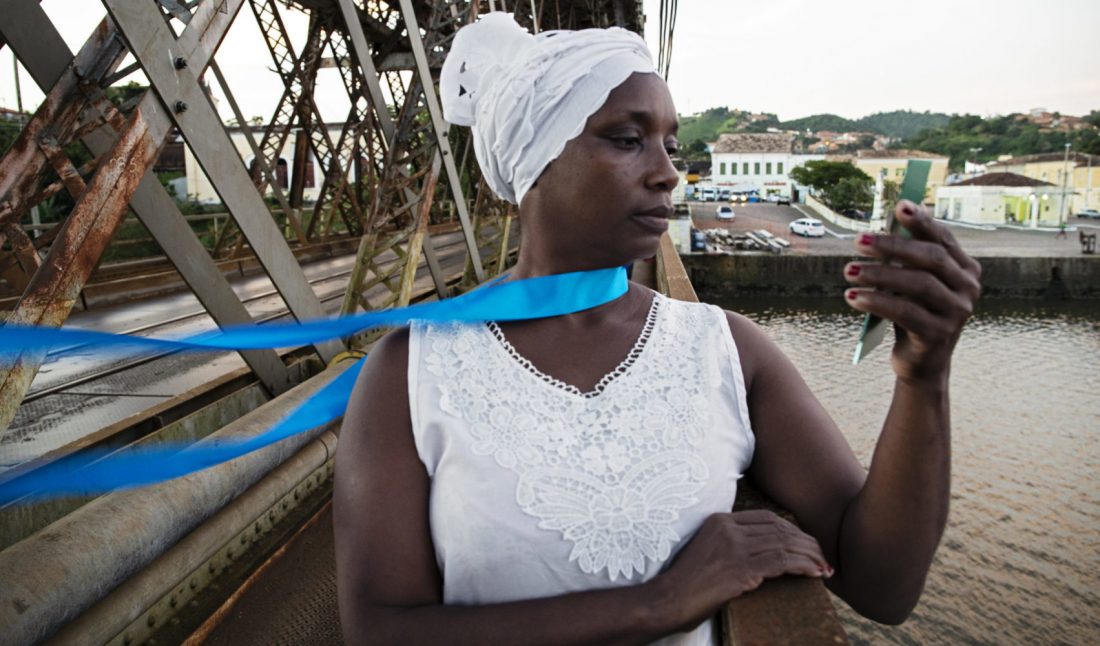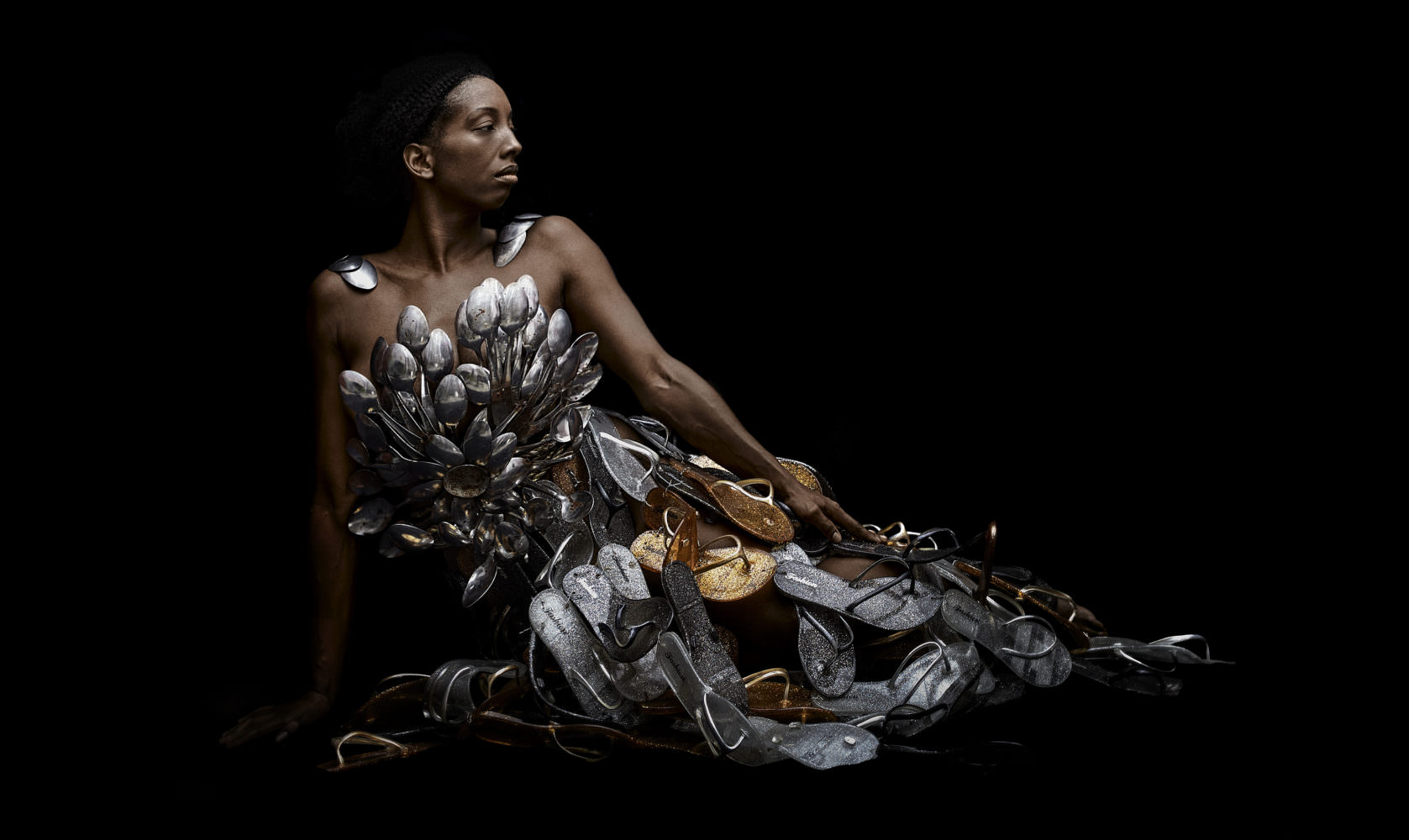Right now, all over the world, museums and galleries are temporarily closed or operating by appointment only. The Coronavirus pandemic has changed the course of the art world, and the lives of its patrons, until further notice.
In Chicago, that is the case of Mariane Ibrahim Gallery, which last month opened an exhibition entitled “The Discovery of What it Means to Be Brazilian.” Since, the gallery has closed early due to the outbreak of COVID-19.
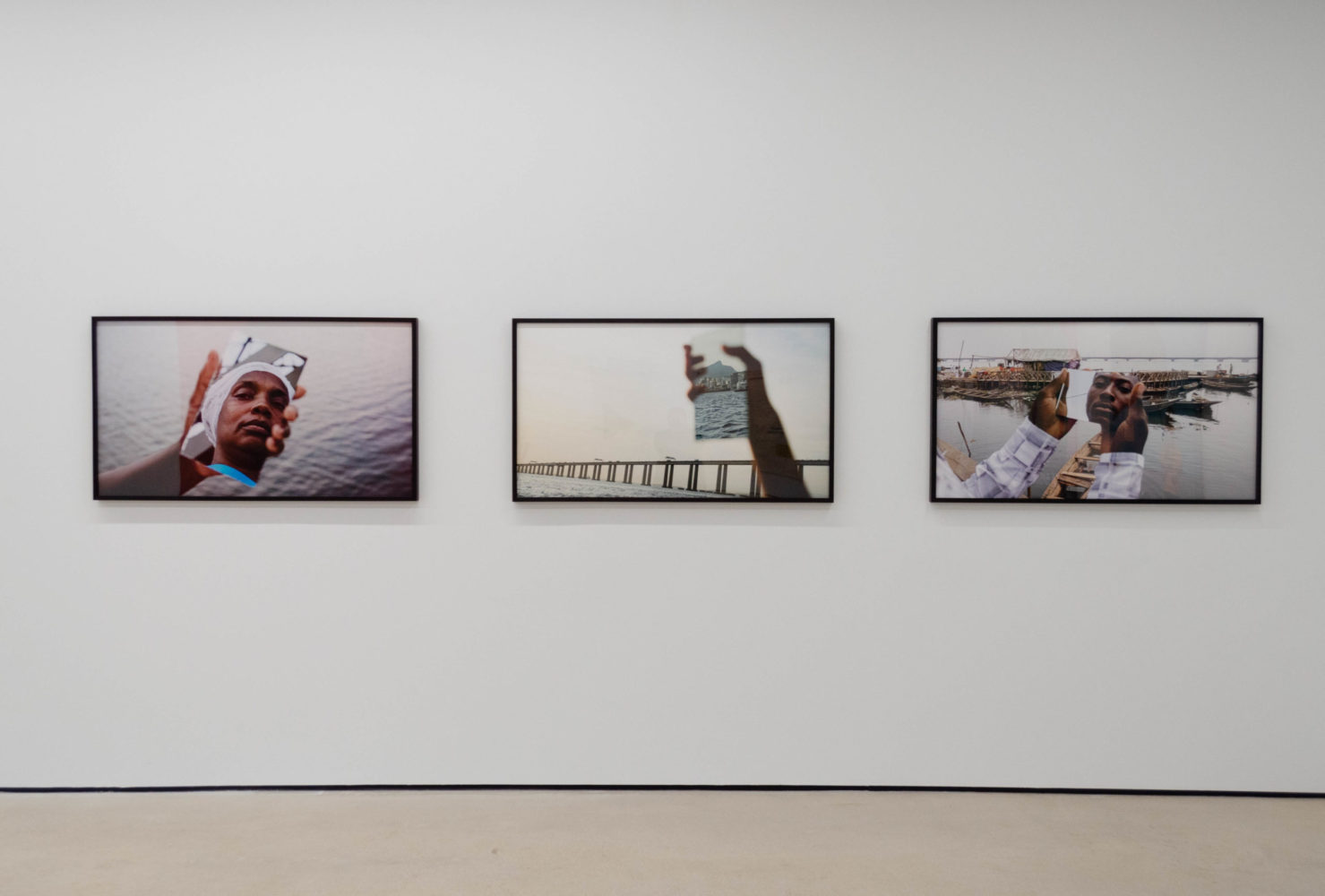 Installation view of “The Discovery of What it Means to Be Brazilian,” courtesy of Mariane Ibrahim Gallery.
Installation view of “The Discovery of What it Means to Be Brazilian,” courtesy of Mariane Ibrahim Gallery.
Regardless of being able to view it in person or online, the show shines important light on the past and present colonial history of Brazil. Conceived by curator and artist Hélio Menezes, the show took its name from James Baldwin’s 1959 essay The discovery of what it means to be an American, reflecting the author’s views on identity traps, race, and how it’s necessary to be free of myths in order to discover one’s true self.
To learn more about this exhibition and the importance of rediscovering heritage, Whitewall caught up with Menezes.
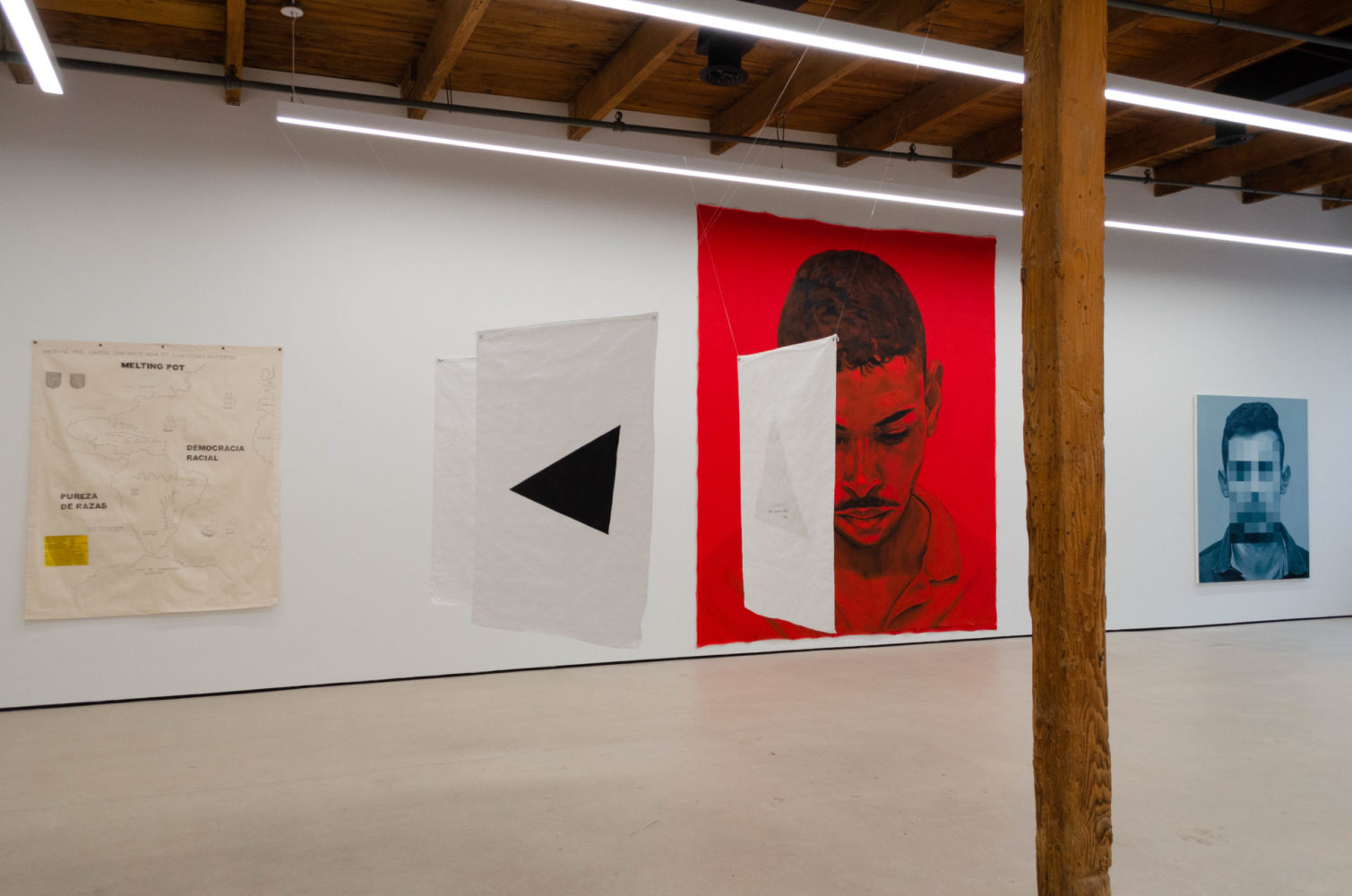 Installation view of “The Discovery of What it Means to Be Brazilian,” courtesy of Mariane Ibrahim Gallery.
Installation view of “The Discovery of What it Means to Be Brazilian,” courtesy of Mariane Ibrahim Gallery.
WHITEWALL: Can you tell us a bit about the starting point for this show?
HÉLIO MENEZES: “I’ll give you carte blanche.” That was how Mariane Ibrahim invited me to curate the exhibit in her new space in Chicago. During this conversation, at least a dozen magnificent Afro-Brazilian artists were running through my mind and I could see different narratives intertwining their works. A few days later, when I put pen to paper, the show really took form with the five contemporary black artists it presents—all of whom I have been following and studying in recent years.
In the same time, I was emerged in Baldwin’s writings. It produced a powerful encounter. I was convinced of how current and useful they are to Brazil’s cultural debates and contemporary context, both in the similarities and particularities they uncovered between the two nations. It was the intersection between fresh works by Brazilian artists and the American author’s reflections that ultimately shaped the show.
WW: What parallels can we expect to find between this exhibition and Baldwin’s essay?
HM: While he was outside the U.S., Baldwin wrote about a paradox in his identity. Everywhere else, he was expected to be an “American,” but at home as a black man, he did not see himself reflected in the whitewashed narrative of what or who a proper “American” was. The text was developed much like the body of works in the show—diving into their own contradictions, author and artists extrapolated their personal conditions toward what that means about the country and its culture in their complexity.
For Baldwin, leaving the U.S. allowed him to see/live from another perspective, reconsidering what he had taken for granted and raising questions about how identity, history, and the intrinsic narratives that connect them are formed and function both inside ourselves and through external cultural processes.
In Baldwin’s own words (in Notes of a Native Son, 1955): “One writes out of one thing only—one’s own experience. Everything depends on how relentlessly one forces from this experience the last drop, sweet or bitter, it can possibly give. This is the only real concern of the artist, to recreate out of the disorder of life that order which is art.” This idea, present across his work, served as inspiration for the show’s curatorship.
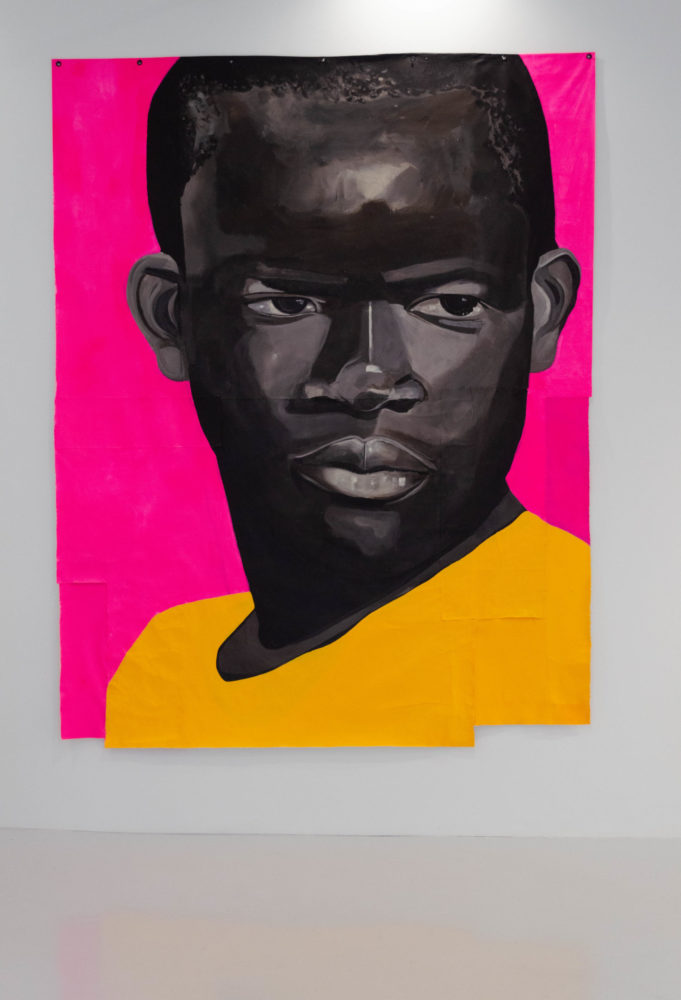 Installation view of “The Discovery of What it Means to Be Brazilian,” courtesy of Mariane Ibrahim Gallery.
Installation view of “The Discovery of What it Means to Be Brazilian,” courtesy of Mariane Ibrahim Gallery.
WW: In this show are works by five Afro-Brazilian artists—Jamie Lauriano, No Martins, Aline Motta, Éder Oliveira, and Tiago Sant’Ana. Can you tell us a bit about this selection?
HM: The five artists in the show have stood out in the contemporary Brazilian art scene as celebrated, award-winning creators of their generation. Through different mediums—articulating video, photography, painting, drawing, collage, objects, and performance—and in their own ways, these artists investigate sensitive issues of Brazil’s colonial past and violent present, bringing to contemporary art powerful meanings and new depths through figuration, critical revision and conceptual density. In this sense, they are artist-thinkers who represent a vigorous Afro-Brazilian production that has seen exponential growth in the last years.
WW: How did you choose the works on view? How do they interact with one another?
HM: The works were chosen in close dialogue with the artists, while also proposing that they review themselves, Brazil, and their works through Baldwin’s critical proposals in the text that gave the show its name. All the selected works dialogue with the paradox underlined in Baldwin’s essay, sharing the investigative field on constitution of the self and the racial tensions that still shape Brazil, contradicting the expectations of what it means to be Brazilian in the eyes of foreigners.
Far from the idyllic landscapes and Carnival festivities that have sold a paradisiacal image of the country, these works point to a more layered Brazil, still resisting its past as the path to find alternative futures. The works selected are more like symptoms than explanations of the conflicts, experiences and diversity that mark Brazilian’s contemporary social and artistic context.
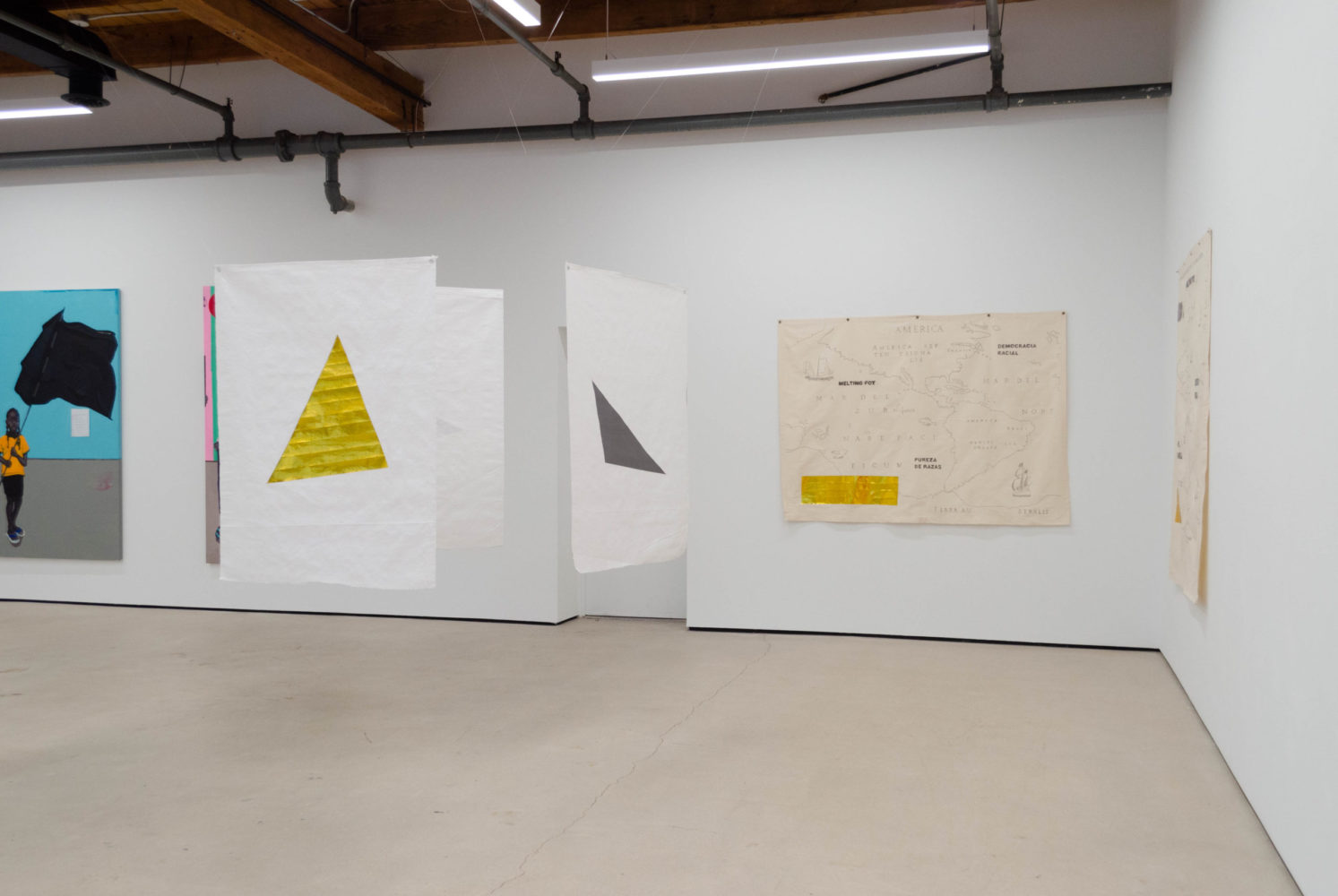 Installation view of “The Discovery of What it Means to Be Brazilian,” courtesy of Mariane Ibrahim Gallery.
Installation view of “The Discovery of What it Means to Be Brazilian,” courtesy of Mariane Ibrahim Gallery.
WW: What more are you hoping to convey from this exhibition, past common knowledge in relation to Brazil’s colonial past?
HM: Brazil, as we know it, doesn’t exist. It’s a result of projections—through images and stories fabricated by a white, male, and elitist point of view, which have dominated both political discourse and recognition of artistic production. Despite the historical tradition of cultural erasure, there are many “Brazils” yet to be discovered—the vast black contribution to a country in which African heritages were and remain cornerstones. Black visions of the past, present, and future of Brazil, and new perspectives on the consequences of being the last country in the Americas to abolish slavery.
This view of a pacified, modernized, plasticized Brazil has always been obsessed with foreign benchmarks and framed through subservient notions. The exhibition in Chicago is a modest provocation for Brazilians to rethink how our society was formed and still functions today, and for non-Brazilians to experience other truths about this dramatic country.
Through the sensitivity of the selected works and artists, the show intends to strip the visitor of stereotypical visions of Brazil and Brazilian art.
WW: The exhibition explores identity and the journey of self. Did you learn anything about your own identity through this curatorial process?
HM: My curatorial proposals inevitably struck back at me in the form of very personal—and in some cases unexpectedly visceral—questions. Diving into each of the artists’ personal stories, research, and artistic processes, and finding shared narratives and experiences, suddenly became very much about my own identity and role—not only in the show, but also in my profession as an anthropologist and curator toward Brazilian culture.
The process between first envisioning the show in Brazil and then preparing the show in the U.S., prompted me to rethink notions of “Brazilianness” and blackness that have molded me, and now gained other layers. I rediscovered the continuous need for plurality, perspective, and exchange. I remembered how painful realizations are essential to transformation.






